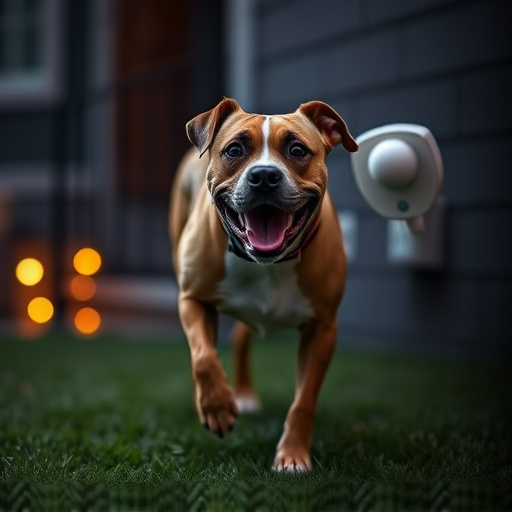Motion sensors, particularly the innovative motion sensor barking dog alarm, play a vital role in pet security by deterring intruders and safeguarding animals from harm. These advanced systems utilize infrared or microwave technology to create coverage zones, triggering alerts upon detection of human movement or specific canine behaviors. By mimicking a real dog's protective barks, this solution offers a dynamic deterrent while minimizing false alarms, ensuring peace of mind for pet owners. Integrating motion sensor barking dog alarm features into home security enhances overall effectiveness, protecting both family and pets from intruders.
“In today’s world, ensuring your home’s security is paramount, especially with pets roaming freely. This article explores innovative pet security solutions, focusing on the power of motion sensors and a unique ‘Barking Dog Alarm’ system. We delve into how these technologies work synergistically to protect your space and keep your furry friends safe. Understanding motion sensors and their role in pet security is the first step towards a smarter home. Let’s uncover how these devices can transform your home defense, from detecting motion to training your dog to deter intruders.”
Understanding Motion Sensors: How They Work and Their Role in Pet Security
Motion sensors play a pivotal role in pet security systems, especially those designed to deter unwanted intrusions and protect pets from potential harm. These sensors are typically based on technology that detects changes in motion or heat signatures within a defined area. For instance, a motion sensor barking dog alarm uses advanced algorithms to differentiate between a human’s movements and a pet’s normal behavior, minimizing false alarms while ensuring prompt responses to genuine threats.
The sensor’s mechanism involves the use of infrared (IR) or microwave waves to create a grid of coverage zones. When an object, such as an intruder or a pet, enters these zones, the sensors trigger alerts. In the case of a barking dog alarm, the system is trained to recognize specific patterns of movement associated with a dog’s behavior, like quick walks or jumps. This enables it to respond accurately, avoiding unnecessary barking or activation due to environmental factors like wind or passing animals.
The Barking Dog Alarm: A Novel Approach to Deterring Intruders
In the realm of pet security, the Barking Dog Alarm stands out as a novel and innovative approach to deterring intruders. This advanced system leverages a motion sensor that detects unexpected movements around your property, triggering a realistic and intimidating bark from an artificial dog. Unlike traditional alarm systems that rely solely on sirens, the barking dog alarm offers a more dynamic and persuasive deterrent by mimicking the behavior of a real, protective canine.
The integration of a motion sensor ensures that the alarm is activated only when necessary, reducing false alerts and conserving battery life. When an intruder enters the designated area, the system automatically sets off a series of barks, designed to startle and scare off potential threats. This clever strategy not only enhances home security but also provides peace of mind for pet owners, knowing their furry companions are vigilant guardians even when they’re not physically present.
Integrating Pet Safety Features: Enhancing Your Home Security System
Integrating pet safety features into your home security system can significantly enhance its effectiveness and ensure a secure environment for both your family and pets. One such feature is the motion sensor technology, which can detect any unusual movement within your premises. These sensors are particularly useful in identifying intruders, but they also play a crucial role in pet-friendly homes by triggering alarms when animals enter or leave specific areas, deterring potential thieves and keeping curious pets safe.
Additionally, barking dog alarm systems have emerged as an innovative solution for pet owners. These devices employ motion sensors combined with advanced sound technology to distinguish between genuine threats and false triggers caused by pets. When a potential danger is detected, the system activates an alarm, alerting both residents and nearby neighbors, thereby deterring intruders while ensuring peace of mind for pet owners.
